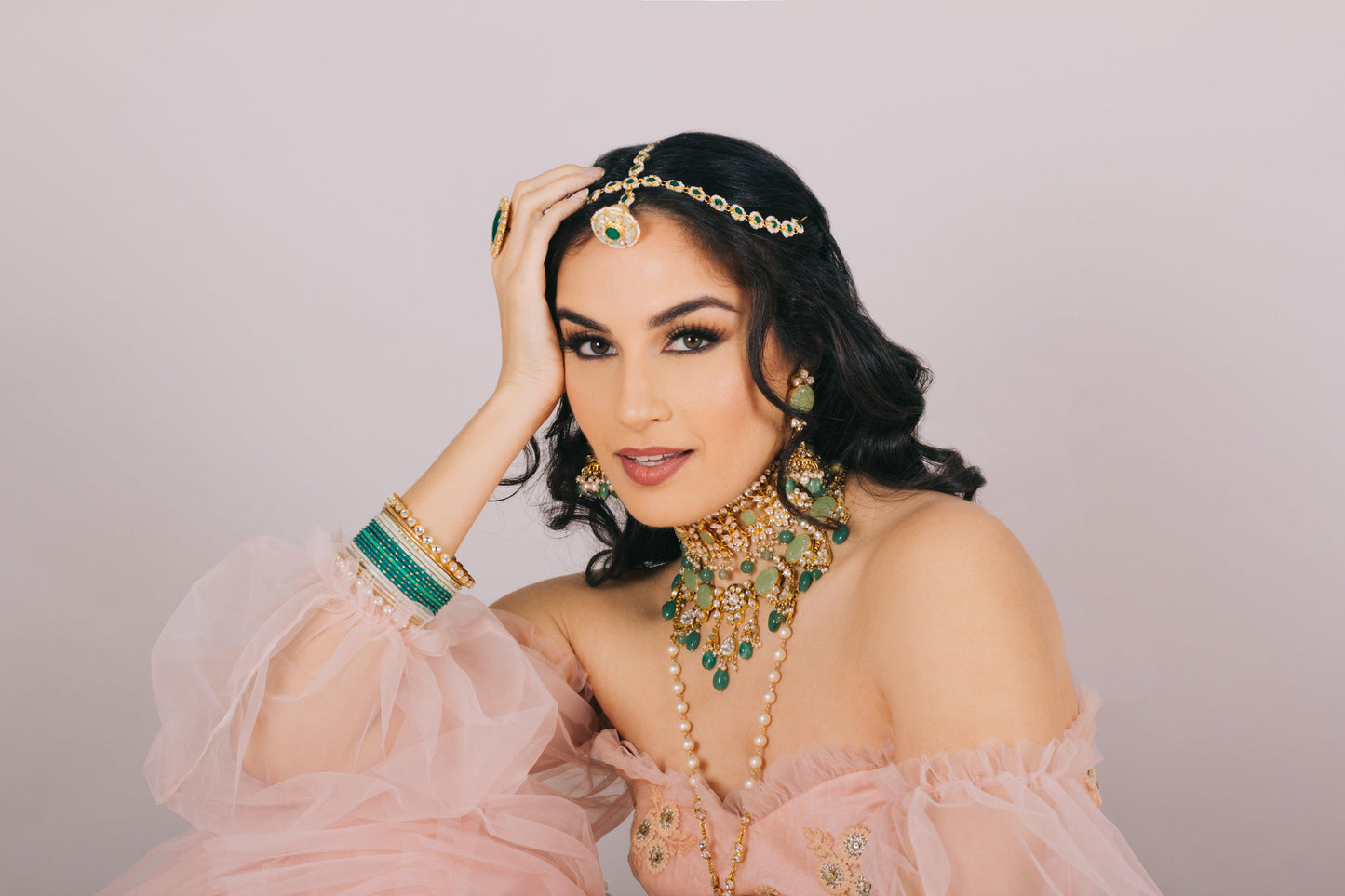
Being in the South Asian jewelry business for over 15 years I have seen so many changes when it comes to traditional pieces entering into Western mainstream fashion. I remember attending a Fashion Cares' 2005 Bollywood Cowboy fund-raiser, sponsored by M.A.C. I recall being excited about the inclusion of our culture into this theme. However once I got there I felt uneasy when I saw traditional garments and jewelry worn inappropriately by various attendees. At the time, frankly I don't think I thought that my opinion would matter enough to make a difference. Thankfully as the years went on through the help of social platforms like Twitter and Instagram many people have spoken up and made a difference on how big companies or celebrities should take responsibility for their actions in regards to appropriation.
On the other hand many well-meaning people feel intimidated by this subject and would rather avoid learning or asking any questions in fear of being offensive. Is it ok to participate in someone else's culture by wearing their traditional pieces? In this article Shaifali Kapur dives deeper into this subject and gives us a little history on South Asian headpieces.
Malinda Chohan

Traditional Headpieces: Am I Appreciating or Appropriating?
“Cultural appropriation” is an important term for minority cultures. The phrase has given marginalized communities the opportunity to voice their concerns with industries who have both knowingly and unknowingly diluted their traditions. In a world where haldi doodh has become “the golden latte,” where cornrows have become “Kardashian boxer braids,” the lines between appropriation and appreciation can be blurred. This is particularly problematic when a large company appropriates a tradition and rebrands it with a new name. See "Chandelier Hair Clip” reference
The claiming and renaming of South Asian jewelry and clothing is a clear example of appropriation. But what if you do not want to appropriate the culture, and rather wish to appreciate it?
Perhaps you are attending a South Asian wedding and wish to wear cultural jewels. The first point is to remember that traditions have meaning – so it is best you learn about their significance.
This leads us into a discussion about some of the most appropriated South Asian pieces yet: tikkas and bindis. Let us explore their origins, their traditional significance, and their foray into modernity.
Why do so many South Asians wear maang tikkas and bindis?
Historically, these headpieces were worn for their spiritual significance rather than the style points they offered. They were also used in conjunction with the chakras [see our blog on chakras here]. As a seven-part system, chakras are vortexes of energy that sit at various points along the centreline of the body. The sixth chakra, also referred to as the ‘third eye’ is perhaps the most talked about energy centre in pop culture. In Sanskrit, we refer to it as Agya chakra. Agya represents the seat of our intuition – it is the eye beyond the two.
The term maang tikka is quite user-friendly. Its literal translation is “middle ornament” and refers to where the jewelry sits. The maang tikka was indirectly used to gain control over emotions. By adorning Agya, women hoped to tap into an innate ability to see beyond the physical world. The same was true for other forms of third eye markings (e.g., bindis). Additionally, red vermillion powder has been donned for centuries by both men and women after Puja. It is not so much that the jewelry or powder itself was considered to have superpowers – it had more to do with the adoration of divine traits. By focusing one's attention on Agya, they could demonstrate their priority over worship. An intention that still holds true today.
Tradition meets modernity
When something is worn by an entire community, a revival of creativity and chicness is bound to happen. Over time, tikkas and bindis have evolved into statements of style. And as South Asians began to immigrate to the West, their culture travelled with them.
However, they began to encounter racial and cultural intolerance from a dominant White and Christian society. Back home their families were dealing with the patronizing effects of British colonization. Eventually, tikkas and bindis became the object of ridicule and supplied an excuse to express racism (e.g., “Paki dot”).
South Asians who have grown up in western societies can have nuanced journeys with their identities. Many adopt Eurocentric nicknames and wish to assimilate into these spaces. It has taken a lot of time for those living under the Western gaze to feel safe – and eventually proud of wearing their culture in White spaces.
Those who have spent years grappling with their identities understandably feel taken aback by the sudden appropriation of their culture. It can be quite hurtful to see traditional attire worn as costume at music festivals. It is equally upsetting when they are used to satisfy the latest trends. Therefore, it is necessary to understand that culture is not a trend. Seeing a celebrity assume a look is not an excuse to skip past doing the research.



'Wear' versus 'Where'
If you have decided to wear an item such as a maang tikka, take your environment into account. The most suitable place to wear one is at a South Asian wedding event. Weddings symbolize a celebration of tradition and culture. Unless you are South Asian yourself, ditch the idea of wearing them during Halloween or at a concert.
Source your jewelry and outfits from South Asian vendors. The desire to be appreciative should extend to supporting cultural brands rather than appropriative manufacturers (we see you ASOS).
Finally, do not be afraid to ask questions when you are unsure of what you are getting into. Remember that continued research, empathy, and patience will be your best friends along your journey to cultural appreciation. Good luck!
Written by Shaifali Kapur
@shaifali.kapur
Model & Article Author: Shaifali Kapur @ShaifaliKapur
Photographer: Baljit Singh @bsinghh
Wardrobe: Dee Kapadiya @deekapadiyaofficial
Makeup & Hair: Shivani Patel @nishartistry
Studio: @infusemedspa









